The Power of Paid Advertising: Unlocking Business Growth with Effective Strategies
In today’s highly competitive digital landscape, businesses are constantly seeking new ways to reach their target audience. One of the most effective methods to achieve this is through paid advertising. With its ability to drive immediate traffic, increase brand awareness, and generate leads, paid advertising has become a cornerstone of modern marketing strategies. Learn more about paid advertising here.
Why Paid Advertising Matters
Driving Instant Visibility
One of the greatest advantages of paid advertising is its ability to deliver instant visibility. While organic growth through SEO and content marketing can take months to see significant results, paid ads allow businesses to position themselves in front of potential customers almost immediately. By utilizing platforms like Google Ads, Facebook Ads, and Instagram Ads, businesses can target specific demographics and ensure that their brand message reaches the right people at the right time.
Paid advertising is especially beneficial for new businesses or those looking to launch new products or services. Without an established online presence, it can be difficult to get noticed in search engine results pages (SERPs) organically. However, with a well-structured paid ad campaign, businesses can appear at the top of SERPs and other platforms, instantly grabbing the attention of potential customers.
Enhanced Targeting Capabilities
Another compelling reason to invest in paid advertising is the advanced targeting options available. Unlike traditional forms of advertising, which rely on mass broadcasting to a wide audience, paid digital ads allow businesses to pinpoint their ideal customer segments. Through data-driven insights, marketers can create custom audiences based on factors such as:
- Location
- Age
- Gender
- Interests
- Online behavior
By targeting specific groups, businesses can ensure their ads are shown to individuals most likely to convert. This reduces wasted ad spend and boosts overall campaign efficiency. For example, a local restaurant could target users within a 10-mile radius who have previously expressed an interest in dining out, thereby increasing the chances of attracting nearby customers.
Types of Paid Advertising
Paid advertising comes in various forms, each suited to different goals and audiences. Below, we explore some of the most popular types of paid advertising that businesses use today:
1. Pay-Per-Click (PPC) Advertising
PPC advertising is one of the most common forms of paid digital advertising. It involves bidding on specific keywords so that your ads appear at the top of search engine results when someone searches for those terms. You only pay when someone clicks on your ad, making it a cost-effective way to drive targeted traffic.
Popular PPC platforms include:
- Google Ads
- Bing Ads
- Yahoo Ads
PPC allows businesses to target potential customers actively searching for products or services related to their industry. For example, if you own an online store selling fitness equipment, you can bid on keywords like “buy dumbbells online” to ensure your ads appear at the top of the search results for people looking to make a purchase.
2. Display Advertising
Display advertising involves placing banner ads on websites, blogs, and social media platforms that are part of a specific ad network. These visual ads often include images, videos, or animations and can be used to raise brand awareness, retarget previous visitors, or promote special offers.
Display ads are effective for building brand recognition as they are shown to users while they browse the web, even if they’re not actively searching for your products or services. This keeps your brand top of mind and encourages users to click through when they’re ready to make a decision.
3. Social Media Advertising
Social media platforms like Facebook, Instagram, Twitter, and LinkedIn have become essential channels for paid advertising. These platforms offer advanced audience targeting, allowing businesses to reach users based on their interests, demographics, and behaviors.
Social media ads come in a variety of formats, including:
- Image ads
- Video ads
- Carousel ads
- Stories ads
Social media advertising is highly engaging and allows businesses to interact with their audience in a more casual and personal way. It’s especially effective for promoting brand awareness, generating leads, and driving website traffic.
4. Native Advertising
Native ads are designed to blend in with the surrounding content, making them less intrusive than traditional ads. These ads typically appear in a format similar to the organic content on the platform, such as sponsored articles, promoted posts, or in-feed ads.
The goal of native advertising is to provide valuable content to users while subtly promoting a product or service. For example, a clothing brand could sponsor a fashion blog post on “How to Style Winter Outfits” that includes links to their products.
How to Maximize ROI with Paid Advertising
While paid advertising offers numerous benefits, it’s essential to approach it strategically to maximize your return on investment (ROI). Here are a few tips to ensure the success of your campaigns:
Set Clear Goals
Before launching any paid ad campaign, it’s crucial to define your objectives. Are you looking to increase website traffic, generate leads, or drive sales? Setting clear goals will help you determine the right platforms, ad formats, and metrics to track.
A/B Testing
A/B testing involves running two or more variations of an ad to see which performs better. This allows you to optimize your ad creative, copy, and targeting to improve performance over time. For example, you could test different headlines, images, or call-to-action buttons to see which version resonates most with your audience.
Monitor and Adjust
Paid advertising campaigns require ongoing monitoring and adjustments to ensure they remain effective. By regularly reviewing performance metrics such as click-through rates (CTR), conversion rates, and cost per acquisition (CPA), you can identify areas for improvement and adjust your strategy accordingly.
Use Retargeting
Retargeting is a powerful tactic that involves showing ads to users who have previously visited your website but didn’t convert. By reminding them of your products or services, you increase the chances of turning them into paying customers. Retargeting ads can be highly effective for driving conversions, as they target users who have already expressed interest in your brand.
Common Mistakes to Avoid
While paid advertising can deliver impressive results, it’s not without its pitfalls. To avoid wasting your ad budget, be mindful of these common mistakes:
Failing to Define Your Target Audience
One of the biggest mistakes businesses make with paid advertising is failing to clearly define their target audience. Without a well-defined audience, your ads may be shown to people who have no interest in your products or services, resulting in low engagement and wasted ad spend.
Ignoring Mobile Users
With more than half of all internet traffic coming from mobile devices, it’s essential to ensure your ads are optimized for mobile. Ignoring mobile users can lead to poor user experience, lower engagement rates, and missed opportunities.
Overlooking Landing Pages
The landing page experience is just as important as the ad itself. Ensure your landing pages are relevant to the ad, provide a clear call-to-action, and are optimized for conversions. A poor landing page can result in high bounce rates and low conversion rates, even if your ads are driving traffic.
Conclusion
Paid advertising is a powerful tool that can help businesses achieve immediate visibility, reach their target audience, and generate leads. Whether through PPC, display ads, social media advertising, or native ads, a well-planned paid ad strategy can significantly boost your business growth. By setting clear goals, optimizing your campaigns, and avoiding common mistakes, you can maximize your ROI and ensure long-term success.
If you’re ready to take your digital marketing to the next level, consider incorporating paid advertising into your strategy. To learn more, visit this guide on paid advertising.



